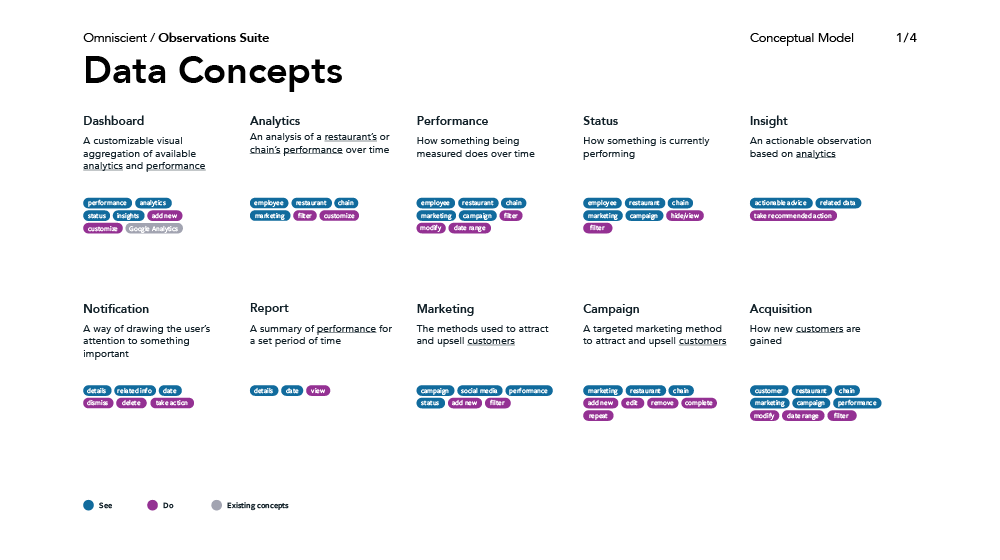Define 11
Conceptual Model
The conceptual model of an experience ensures that features are represented in ways that are comprehensible to users. It looks at how users are likely to engage with features as well as what concepts a user already understands based on other experiences and combines these into recommendations for curating, organizing, and naming aspects of the experience.
The conceptual model should be created near the beginning of a project and maintained as the product or service evolves. To get started on a conceptual model, a loose definition of features and user research, such as immersion or user interviews, are helpful inputs. From this, it’s possible to begin mapping what the user will already understand of the product or service, and what they will have to learn. Beyond simply capturing how the user understands the experience, the conceptual model is useful for consolidating and strengthening features, providing input for the information architecture and interaction model, and ensuring that the project team has a common language around features.
Buy from Amazon Buy ElsewhereOmniscient
Observations Suite
The conceptual model for Observations Suite captures the different concepts and groups them into themes. Important aspects of each concept are highlighted by what the user can see and do. The conceptual model also captures similar experiences that might be useful to follow or to avoid later in the design process.
Related Chapters
06
User Interviews
What are my users' pain points? What are their favorite moments? How do I frame questions to get the most honest answers?
08
Immersion
How can I get the best understanding of my users' contexts? How do I reduce the impact of my presence?
16
Experience Journey
How does the user feel throughout their experience? How can we find opportunities for our experience to shine?
35
User Validation
How do we make sure our product will survive in the wild? When should we seek feedback from users?
